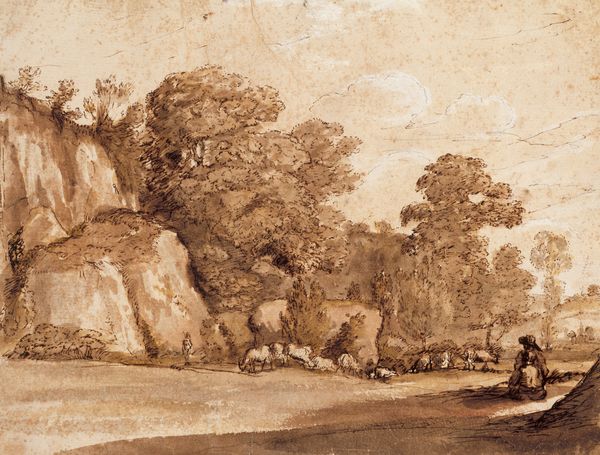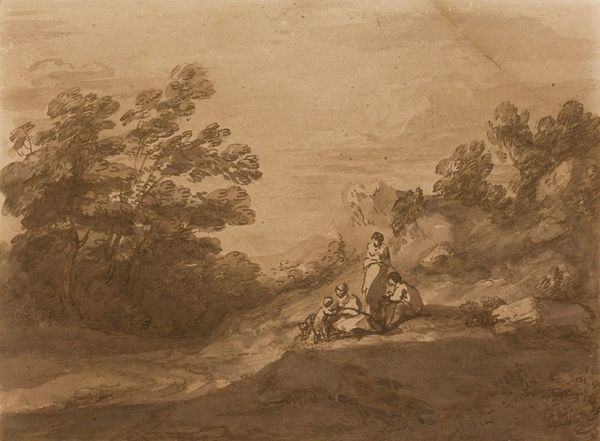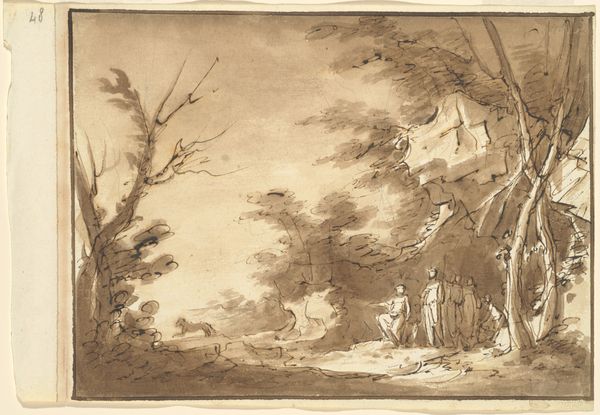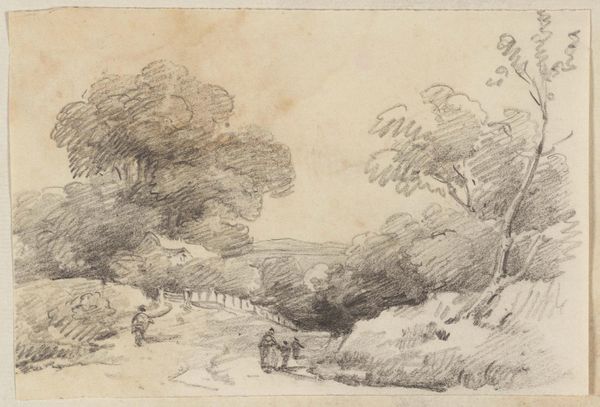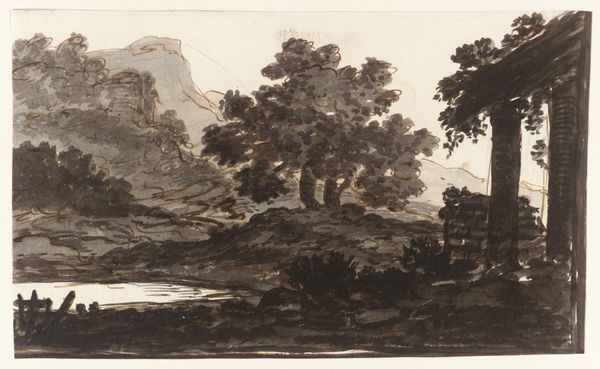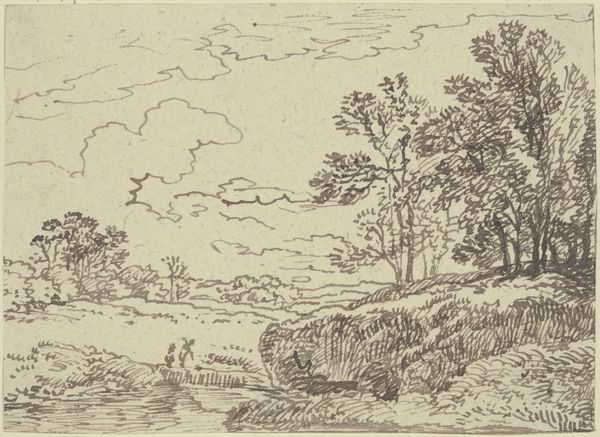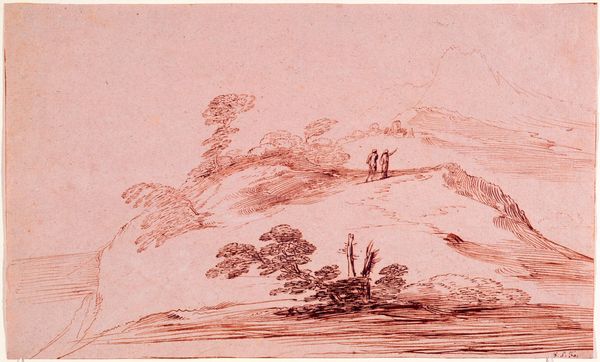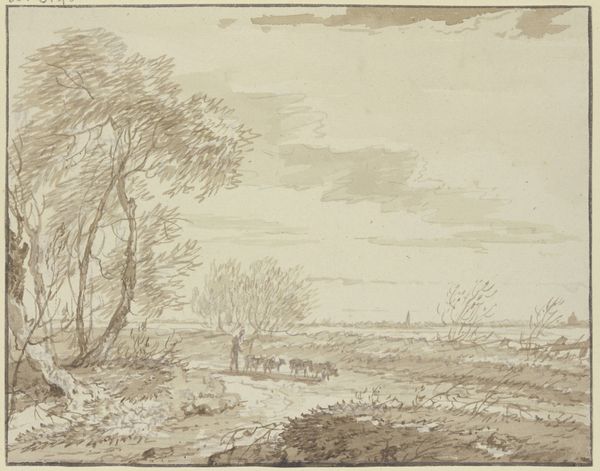
Landskab med en gammel bro over en bæk 1623 - 1635
0:00
0:00
drawing, ink, pencil
#
drawing
#
ink painting
#
dutch-golden-age
#
landscape
#
ink
#
pencil
#
monochrome
Dimensions: 184 mm (height) x 265 mm (width) (bladmaal)
Curator: We're looking at "Landscape with an Old Bridge over a Stream," created between 1623 and 1635 by Pieter Dircksz Santvoort. The artist rendered it in ink and pencil. Editor: It's wonderfully moody. The monochromatic palette lends a melancholic air. The composition, dominated by that slightly precarious-looking bridge, directs your eye across the entire scene. Curator: What strikes me is how Santvoort uses readily available materials like ink and pencil to depict this Dutch landscape. Think about the socio-economic context: landscapes like this were becoming increasingly popular as subject matter, reflecting a growing national identity and pride in the land itself. The relatively simple media meant a wider range of people had access to making and consuming such imagery. Editor: Indeed, the medium lends itself to such detailed and textural rendering. The layering of strokes gives form to the cloudy sky, for instance. Structurally, the composition cleverly uses the diagonal of the bridge to offset the horizontality of the land. The strategic placement of the tiny figures introduces an interesting point of focus too, which provides us with a point of entry into the world presented. Curator: It is quite a remarkable landscape, especially if you consider how Santvoort used very few tools. A drawing like this offered a means of circulating images and ideas about the countryside, functioning almost as a proto-photograph for a society hungry for depictions of its surroundings. This one is also on paper. Can you imagine the types of paper mills and inks used at the time? And who were the paper makers? Editor: It offers such clear visual structures; you are drawn in almost instantly. The scale invites contemplation on the harmony of its composition and material form. Curator: Exactly. And thinking about its journey through time, from Santvoort’s hand in the 17th century to its display today in the Statens Museum for Kunst—the life of materials is fascinating. Editor: Ultimately, this is about that dialogue, or even dance, between line, form, and texture, is it not?
Comments
No comments
Be the first to comment and join the conversation on the ultimate creative platform.
